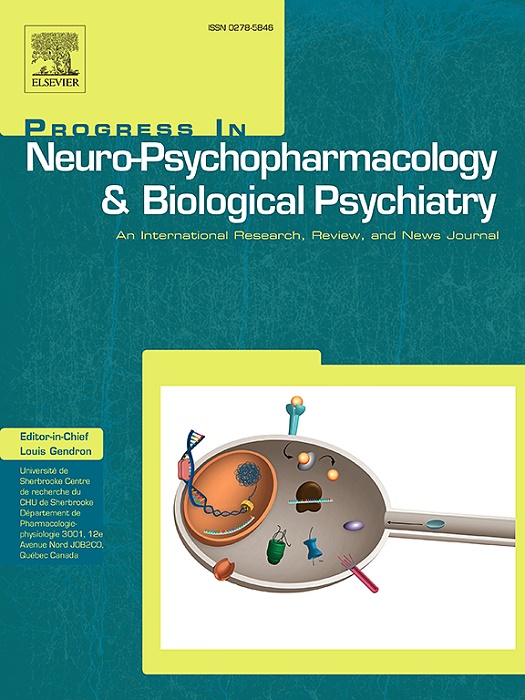Neuroanatomical subtypes of tobacco use disorder and relationship with clinical and molecular features
IF 5.3
2区 医学
Q1 CLINICAL NEUROLOGY
Progress in Neuro-Psychopharmacology & Biological Psychiatry
Pub Date : 2025-01-10
DOI:10.1016/j.pnpbp.2024.111235
引用次数: 0
Abstract
Background
Individual neurobiological heterogeneity among patients with tobacco use disorder (TUD) hampers the identification of neuroimaging phenotypes.
Methods
The current study recruited 122 TUD individuals and 57 healthy controls, and obtained their 3D-T1 images. Heterogeneity through discriminative analysis (HYDRA) was applied to uncover the potential subtype of TUD where regional gray matter volume (GMV) was treated as the feature. Then we examined the clinical, neuroimaging and molecular characteristics of subtypes.
Results
Two distinct neuroanatomical subtypes were found. In subtype 1, TUD individuals showed decreased GMV in right orbitofrontal cortex (OFC), while subtype 2 exhibited distributed pattern of widely GMV increase. Moreover, subtype 1 showed older initial smoking age, longer duration of smoking than Subtype 2. Persistent smoking behavior in subtype 1 is more likely caused by substance dependence/addiction rather than psychosocial factors. GMV correlated negatively with cumulative tobacco exposure in Subtype 1 but not in Subtype 2. Besides, neuroanatomical aberrance in subtype 1 was mainly associated with dopamine system, while neuroanatomical abnormalities in subtype 2 were primarily associated with GABAa.
Conclusions
Overall, our results revealed two opposite neuroanatomical subtypes of TUD, which largely overlapped with their clinical and molecular features respectively. TUD subtypes taxonomy based on objective anatomy could help to facilitate the development of individualized treatment for TUD.
烟草使用障碍的神经解剖学亚型及其与临床和分子特征的关系。
背景:烟草使用障碍(TUD)患者的个体神经生物学异质性阻碍了神经影像学表型的识别。方法:本研究招募了122名TUD患者和57名健康对照者,获取他们的3D-T1图像。以区域灰质体积(GMV)为特征,应用异质性判别分析(HYDRA)揭示TUD的潜在亚型。然后我们检查了亚型的临床、神经影像学和分子特征。结果:发现两种不同的神经解剖学亚型。在亚型1中,TUD个体表现为右侧眶额皮质(OFC) GMV下降,而亚型2表现为GMV广泛升高的分布模式。亚型1比亚型2的初吸烟年龄大,吸烟持续时间长。1型患者的持续吸烟行为更可能是由物质依赖/成瘾引起的,而不是社会心理因素。GMV与累积烟草暴露在亚型1中呈负相关,而在亚型2中无相关。此外,亚型1的神经解剖学异常主要与多巴胺系统有关,亚型2的神经解剖学异常主要与GABAa有关。结论:总的来说,我们的结果揭示了两种相反的神经解剖学亚型,它们的临床和分子特征在很大程度上重叠。基于客观解剖的TUD亚型分类有助于促进TUD个体化治疗的发展。
本文章由计算机程序翻译,如有差异,请以英文原文为准。
求助全文
约1分钟内获得全文
求助全文
来源期刊
CiteScore
12.00
自引率
1.80%
发文量
153
审稿时长
56 days
期刊介绍:
Progress in Neuro-Psychopharmacology & Biological Psychiatry is an international and multidisciplinary journal which aims to ensure the rapid publication of authoritative reviews and research papers dealing with experimental and clinical aspects of neuro-psychopharmacology and biological psychiatry. Issues of the journal are regularly devoted wholly in or in part to a topical subject.
Progress in Neuro-Psychopharmacology & Biological Psychiatry does not publish work on the actions of biological extracts unless the pharmacological active molecular substrate and/or specific receptor binding properties of the extract compounds are elucidated.

 求助内容:
求助内容: 应助结果提醒方式:
应助结果提醒方式:


